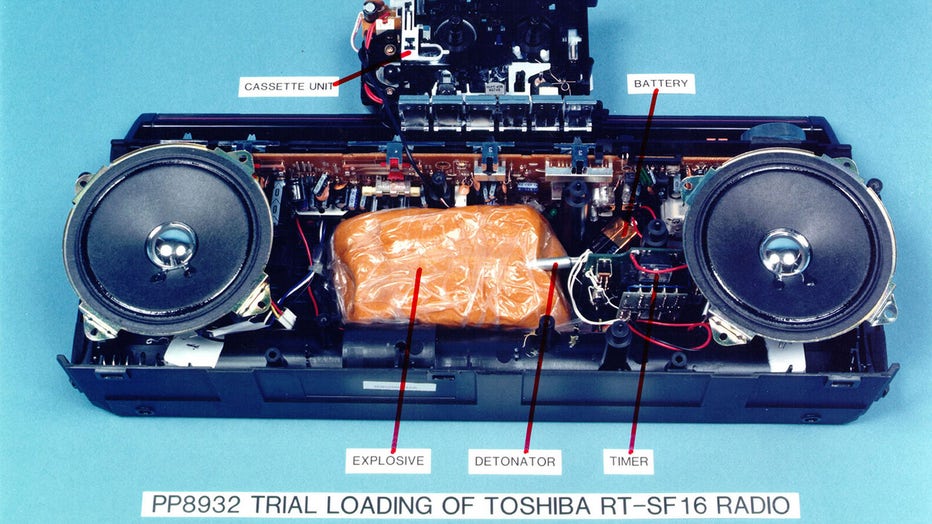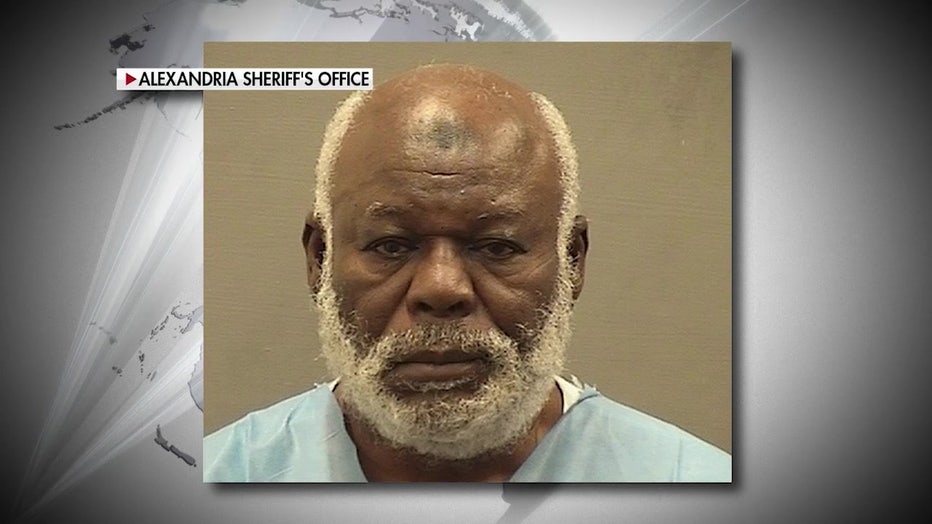Lockerbie bombing suspect appears in US court, over 3 decades later
WASHINGTON - More than three decades after a bomb brought down Pan Am Flight 103 over Lockerbie, Scotland, killing everyone aboard, a former Libyan intelligence official accused of making the bomb appeared Monday in federal court, charged with an act of international terrorism
The extradition of Abu Agila Mohammad Mas'ud Kheir Al-Marimi was a milestone in the decades-old investigation into the attack that killed 259 people aboard the plane and 11 on the ground.
"Although nearly 34 years have passed since the defendant's actions, countless families have never fully recovered," Assistant U.S. Attorney Erik Kenerson said during a court proceeding attended by victims' relatives.
The Justice Department announced Sunday that Mas'ud had been taken into U.S. custody, two years after it revealed that it had charged him in connection with the explosion. Two other Libyan intelligence officials have been charged in the U.S. for their alleged involvement in the attack, but Mas'ud was the first defendant to appear in an American courtroom for prosecution.
The New York-bound Pan Am flight exploded over Lockerbie less than an hour after takeoff from London on Dec. 21, 1988. Citizens from 21 countries were killed. Among the 190 Americans on board were 35 Syracuse University students flying home for Christmas after a semester abroad.

A mock-up of the explosives-loaded Toshiba cassette recorder which blew up Pan Am Flight 103 over Lockerbie In 1988 is on display January 31, 2001 In Edinburgh, Scotland. (Photo by Getty Images)
The bombing laid bare the threat of international terrorism more than a decade before the Sept. 11, 2001, attacks. It produced global investigations and punishing sanctions while spurring demands for accountability from victims of those killed.
Several victims described as surreal the news that Mas'ud was finally in American custody.
"It was quite a moment," said Kara Monetti Weipz, sister of victim Rick Monetti, a Syracuse University student, and the president of Victims of Pan Am Flight 103. "It was unbelievable that it was really happening after all these years, and especially after the last two years."
Outside the courthouse Monday, Paul Hudson carried a photograph of his daughter, Melina, a 16-year-old student who had been returning for the Christmas holidays from an exchange program in England. He recalled how, after the crash, her belongings were scattered around the Lockerbie countryside. The family did get back her passport and her notebook.
"And the notebook had, on the cover, the quote ‘No one dies unless they’re forgotten,’ and I've tried to live by that," he said. Remembrances of his daughter are an "everyday thing" and "this time of year, it gets stronger."
The bearded and balding Mas'ud wore a green jail uniform, and walked with a halting gait to the defense table. He spoke occasionally through an interpreter, and the federal defenders who represented him at the hearing said he wanted to be represented by his own lawyers.
At one point, as the charges were being discussed, Mas'ud said in Arabic, "I cannot talk until I see my attorney."
A detention hearing was set for later in the month.

Abu Agila Mohammad Mas’ud Kheir Al-Marimi
The announcement of charges against Mas'ud on Dec. 21, 2020, came on the 32nd anniversary of the bombing and in the final days of the tenure of then-Attorney General William Barr. At the time of the announcement, Mas'ud was in Libyan custody. The criminal charges were a career bookend of sorts for Barr, who in his first stint as attorney general in the early 1990s had announced criminal charges against two other Libyan intelligence officials.
The Libyan government initially balked at turning over those two men, Abdel Baset Ali al-Megrahi and Lamen Khalifa Fhimah, before ultimately surrendering them for prosecution before a panel of Scottish judges sitting in the Netherlands as part of a special arrangement.
In Mas'ud's case, a Justice Department indictment that was to be unsealed includes three charges related to the explosion, including destruction of an aircraft, resulting in death. Prosecutors said they would not be pursuing the death penalty because the bombing occurred before the specific charges that he faces carried a possible penalty of capital punishment.
The Justice Department, which did not disclose how Mas'ud came to be taken into U.S. custody, has said Mas'ud faces two criminal counts related to the explosion.
Torn by civil war since 2011, Libya is divided between rival governments in the east and west, each backed by international patrons and armed militias on the ground. Militia groups have amassed great wealth and power from kidnappings and their involvement in Libya’s lucrative human trafficking trade
A breakthrough in the investigation came when U.S. officials in 2017 received a copy of an interview that Mas'ud, a longtime explosives expert for Libya’s intelligence service, had given to Libyan law enforcement in 2012 after being taken into custody following the collapse of the government of the country’s leader, Col. Moammar Gadhafi.
In that interview, U.S. officials said, Mas'ud admitted building the bomb in the Pan Am attack and working with two other conspirators to carry out the attack. He also said the operation was ordered by Libyan intelligence and that Gadhafi thanked him and other members of the team after the attack, according to an FBI affidavit filed in the case.
That affidavit said Mas'ud told Libyan law enforcement that he flew to Malta to meet al-Megrahi and Fhimah. He handed Fhimah a medium-sized Samsonite suitcase containing a bomb, having already been instructed to set the timer so that the device would explode exactly 11 hours later, according to the document. He then flew to Tripoli, the FBI said.
Al-Megrahi was convicted in the Netherlands while Fhimah was acquitted of all charges. Al-Megrahi was given a life sentence, but Scottish authorities released him on humanitarian grounds in 2009 after he was diagnosed with prostate cancer. He died in Tripoli, still protesting his innocence.
____
Associated Press journalists Julie Walker in New York and Rick Gentilo and Nathan Ellgren in Washington contributed to this report.

